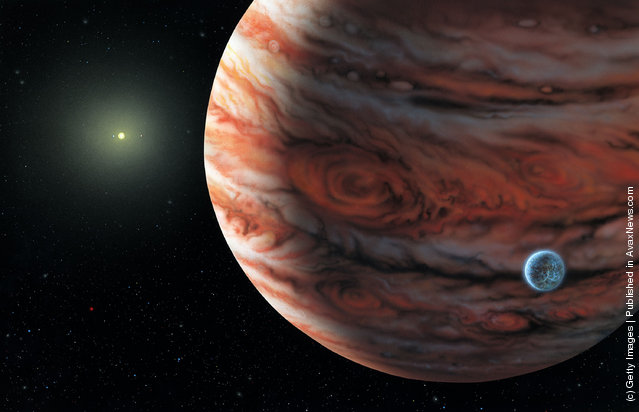
This artist's conceptual drawing released June 13, 2002 depicts a Jupiter-mass planet orbiting the star, 55 Cancri, about 41 light years from Earth. A possible moon around the planet is shown because such moons are thought to be common around this type of planet, but no moon has been detected. (Photo by Lynette Cook/NASA/Getty Images)
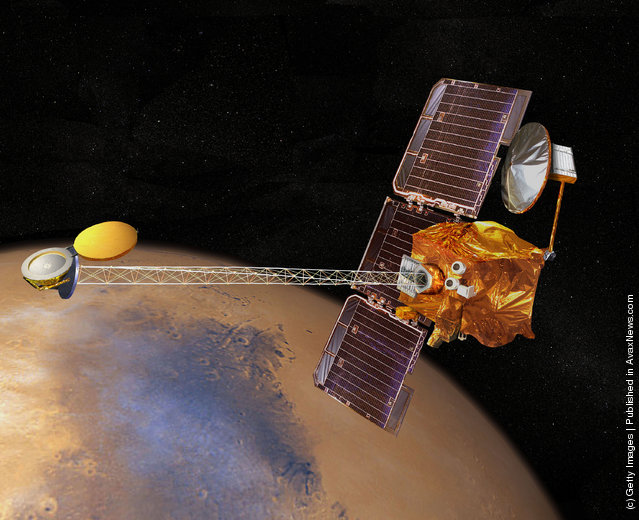
This undated NASA illustration shows an artist's concept of the Mars Odyssey satellite. A rocket carrying the Odyssey satellite lifted off April 7, 2001 from Cape Canaveral Air Force Station in Florida. The $297 million launch will send the Mars Odyssey on a seven month journey to study the Martian surface and gather information in the run up to future manned missions to the planet. (Photo by NASA/Newsmakers)
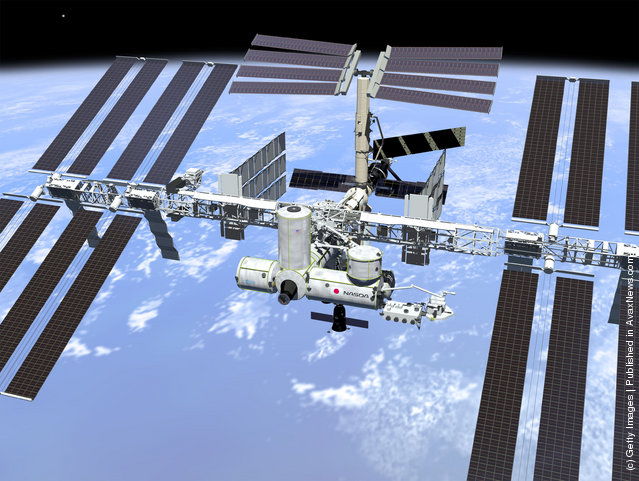
This artist's concept shows the International Space Station when its assembly sequence is completed in 2004, including minor changes to the final station configuration agreed upon by international partners in May 1998. The changes included reducing the number of Russian modules on the station by one while expanding the size of another Russian module. The 1-million pound station will have a pressurized volume equal to two jumbo jets and an acre of solar panels. (NASA image)
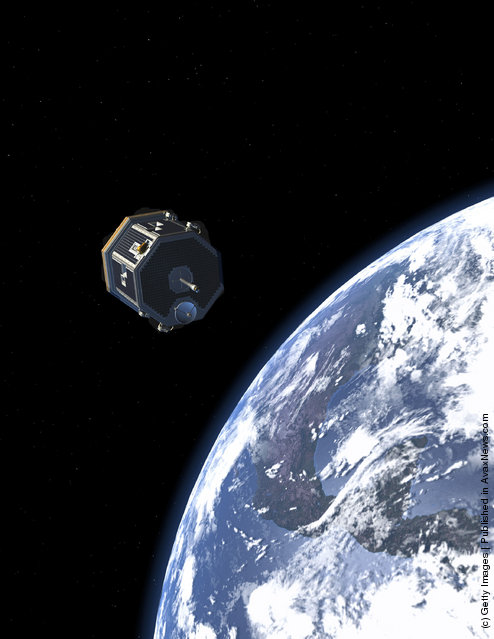
An artist impression of the Comet Nucleus Tour (CONTOUR) spacecraft as it swings past Earth is shown August 16, 2002. The CONTOUR will provide the first detailed look into the heart of a comet by flying as close as 60 miles (100 kilometers) where the spacecraft will take the sharpest pictures of a nucleus while analyzing the gas and dust that surround these rocky, icy building blocks of the solar system. NASA officials said late August 15, 2002 that the COUNTOUR missed a schedule maneuver, which would have sent a probe out of Earth?s orbit on an encounter with multiple comets. Officials are hopeful that the spacecraft will be found. (Photo by NASA/Getty Images)
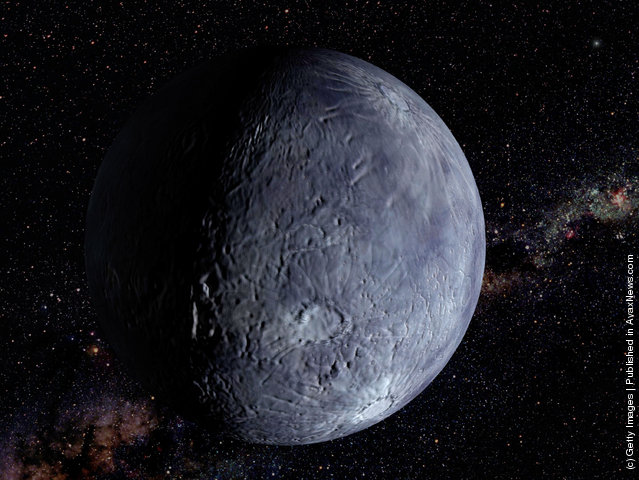
An artist's rendition of the largest object found orbiting the Sun since Pluto was discovered in 1930, is shown October 7, 2002. The object called “Quaoar” was observed by the Hubble Space Telescope and is roughly 800 miles in diameter. Quaoar orbits the Sun at a distance of 4-billion miles in a region of space called the “Kuiper Belt”. (Photo by NASA and G. Bacon/Getty Images)
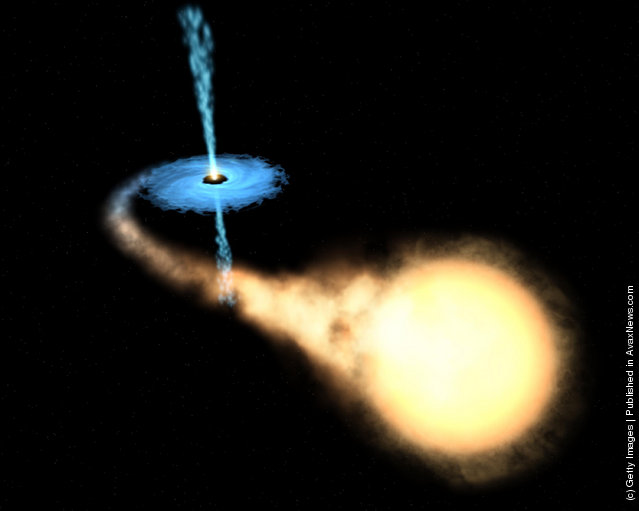
This undated artist's interpretation of the star-sized black hole GRO J1655-40, currently traveling in our solar system at 250,000 miles per hour, was released on November 18, 2002. According to astronomers using data from the Hubble Space telescope this black hole, also known as a “microquasar”, is assimilating material from a its companion star. (Photo by FAECIASP/NASA/ Conicet of Argentina/Getty Images)
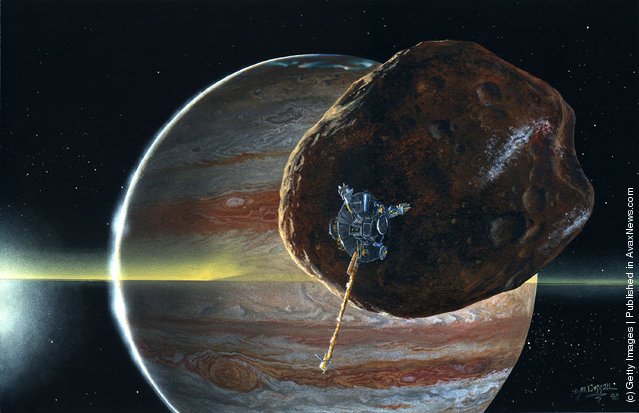
Scientists say the Jovian moon Amalthea, pictured in this undated artist's concept with the Galileo spacecraft, may be full of holes. NASA's Galileo spacecraft discovered the potato-shaped moon orbiting Jupiter and in a recent flyby found that the moon may be a collection of boulders rather then a solid body. (Illustration by Michael Carroll/NASA/Getty Images)
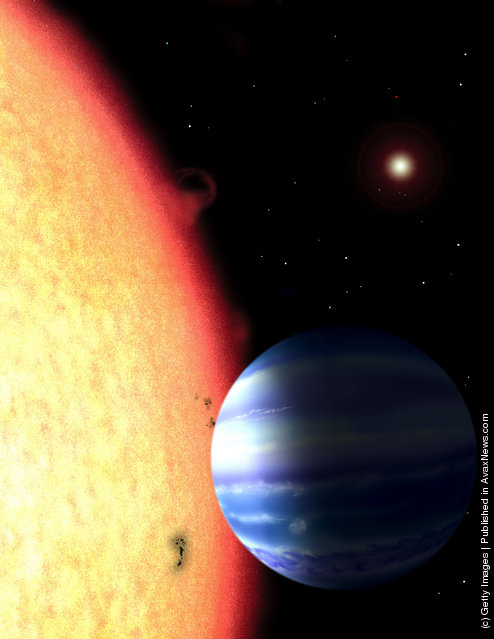
This artist's concept image, showing the farthest planet ever detected, was released by the Harvard-Smithsonian Center for Astrophysics on January 6, 2003 in Cambridge, Massachusetts. The planet named OGLE TR-56b, which is 5,000 light-years away, was discovered using a new technique that measures the minute decrease in light from a star as a planet transverses its face. Scientist hope this new technique will enable them to find more earth sized planets in the future. (Photo by David A. Aguilar, Harvard-Smithsonian Center for Astrophysics/Getty Images)
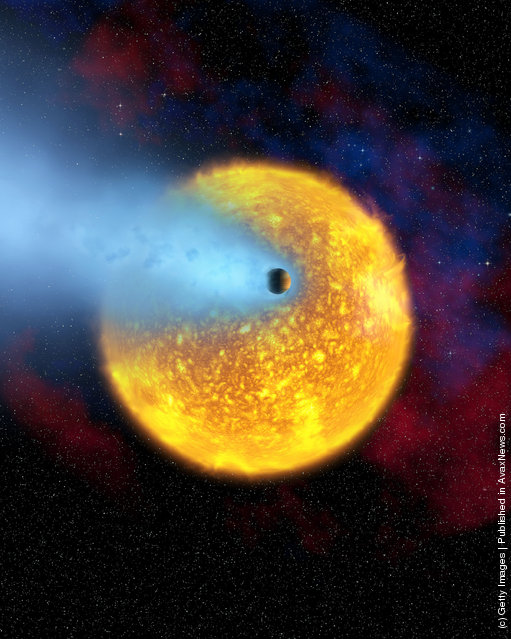
This handout image from the European Space Agency shows an artist's impression of the hydrogen atmosphere of transiting planet HD 209458b streaming off of the planet as it orbits close to its parent star on March 12, 2003. According to the ESA the Hubble Space Telescope made observations of the planet, which is described as a “hot Jupiter” because the gas giant is similar to Jupiter in our solar system and because orbits precariously close to its parent star. (Photo by Alfred Vidal-Madjar/ESA/NASA/Getty Images)
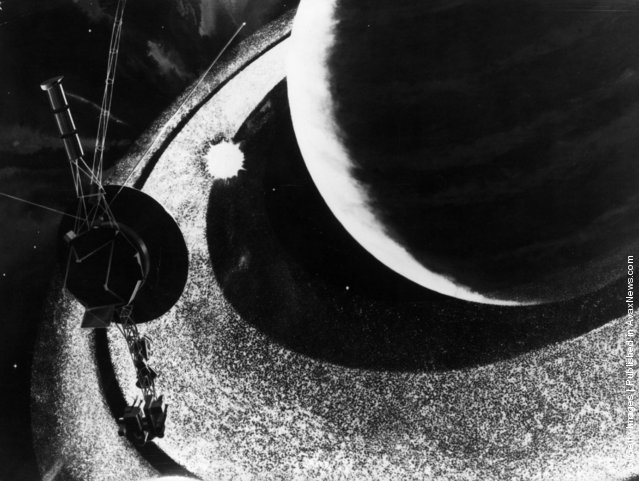
American space probe Voyager I passes the rings of Saturn on its journey to the outer reaches of the Solar System, November 1980. An artist's impression. (Photo by Keystone/Getty Images)
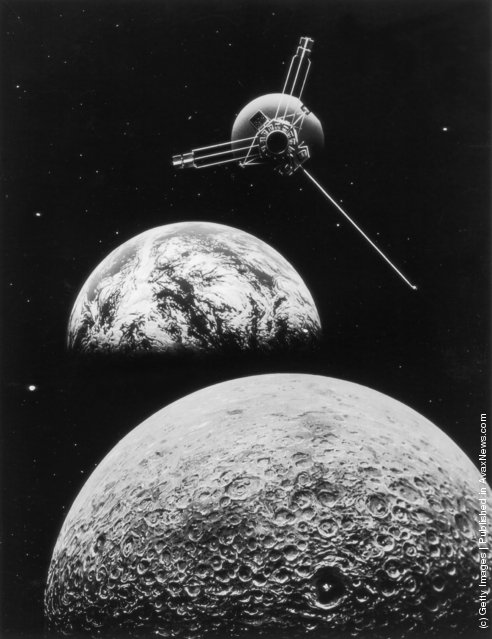
An artist's impression of a Pioneer spacecraft leaving earth and passing the moon. (Photo by Hulton Archive/Getty Images). 1972
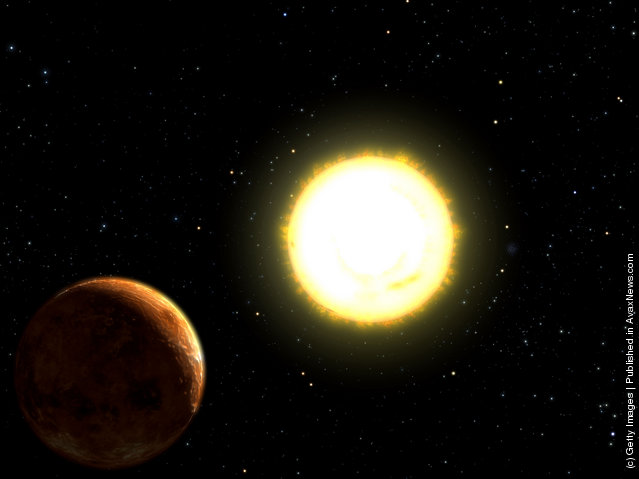
In this undated handout, an artist's rendering shows one of four planets found orbiting the star 55 Cancri. The discovery of this planet makes the system the first known to have four planets. (Illustration by NASA via Getty Images)
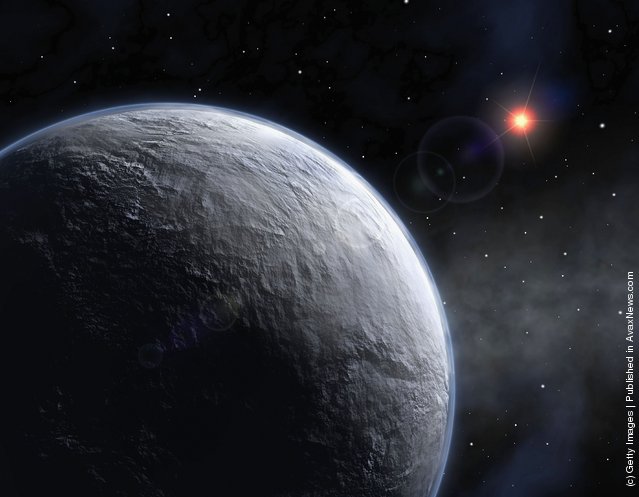
An artist's impression of newly discovered planet, named OGLE-2005-BLG-390Lb, which has been discovered in a project involving two scientists from St Andrews University in Scotland. Scientists say is the most Earth-like found to date, the new planet has a mass five times that of earth and is approximately 20,000 light years from Earth at the centre of the Milky Way. (Photo by European Southern Observatory via Getty Images)
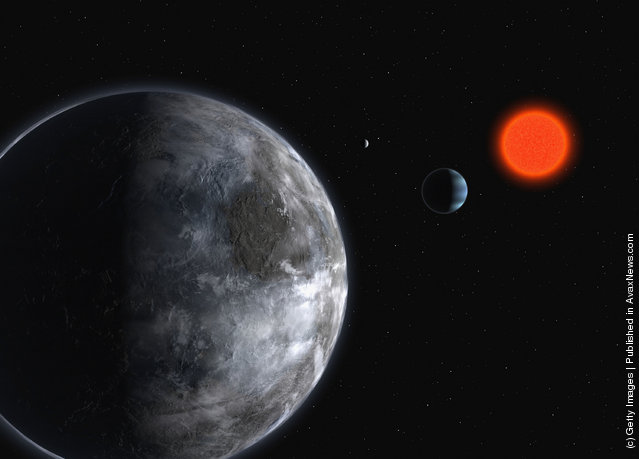
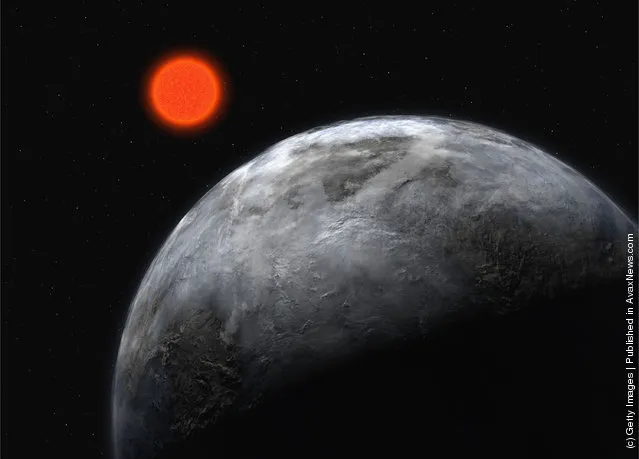
In this artist's impression supplied by the ESO (European Southern Observatory) on April 25, 2007, the planetary system around the red dwarf, Gliese 581, is pictured showing what astronomers believe is the most earth like planet found outside our solar system to date. Using the ESO 3.6-m telescope in Chile, astronomers have uncovered the planet which could have water running on its surface. The planet orbits the faint star Gliese 581, which is 20.5 light-years away in the constellation Libra. (Photo by ESO via Getty Images)
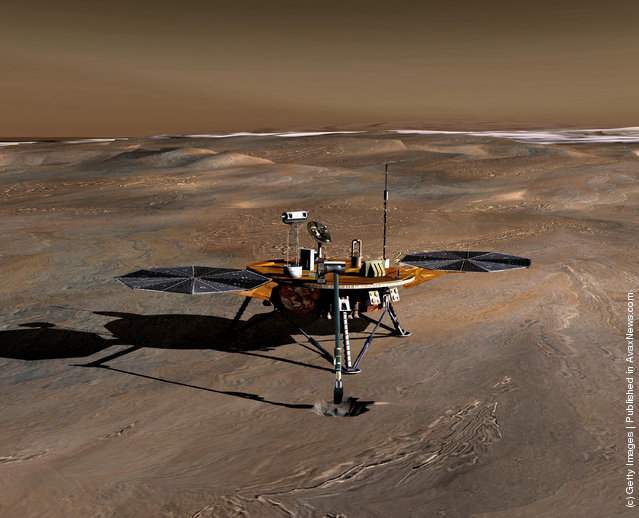
In this handout illustration provided by NASA/JPL, an artist's conception of the Phoenix Mars Lander on the Red Planet. Phoenix is slated to land on Mars on May 25, 2008. Launched in the summer of 2007 the lander will join the twin Mars rovers, Spirit and Opportunity and will study whether permafrost could have supported primitive life on the planet. (Photo Illustration by NASA/JPL via Getty Images)
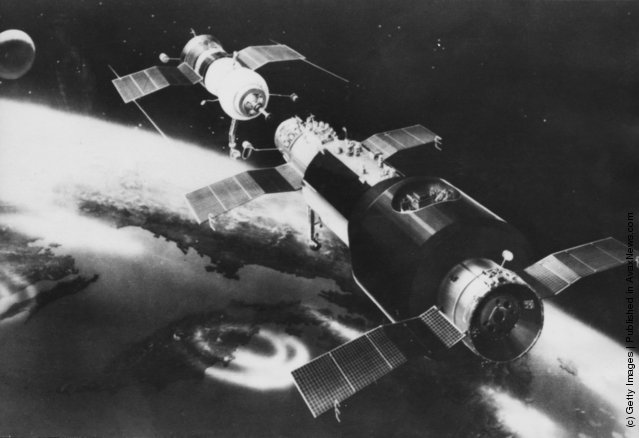
An artist's impression of the Russian Soyuz 11 spacecraft linking up with the Salyut 1 space station, June 1971. The docking did take place, but the three Soyuz 11 cosmonauts died during their return to Earth. (Photo by Keystone/Hulton Archive/Getty Images)
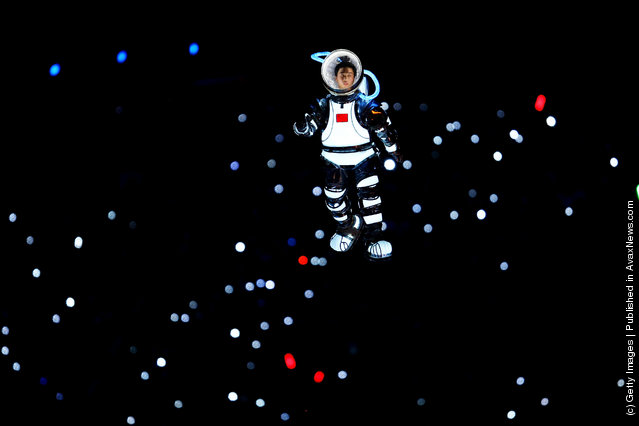
An artist in a space suit performs during the Opening Ceremony for the 2008 Beijing Summer Olympics at the National Stadium on August 8, 2008 in Beijing, China. (Photo by Vladimir Rys/Bongarts/Getty Images)
12 Apr 2011 11:00:00,
post received
0 comments
